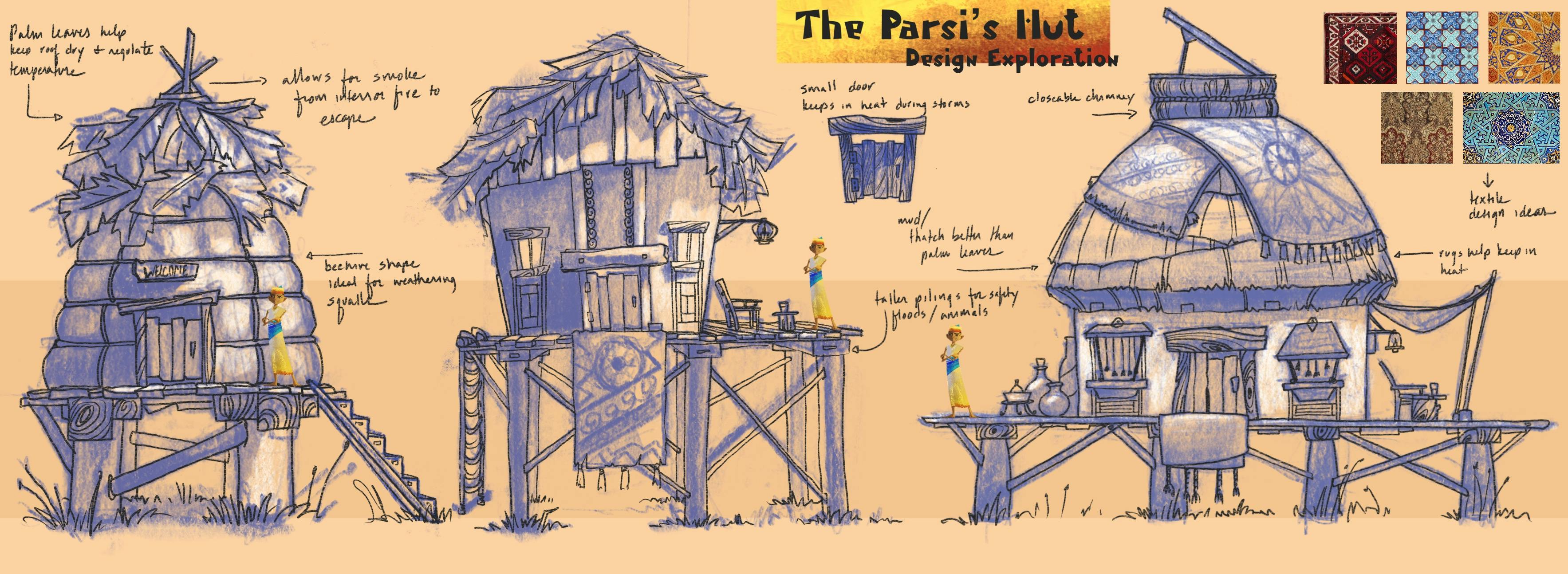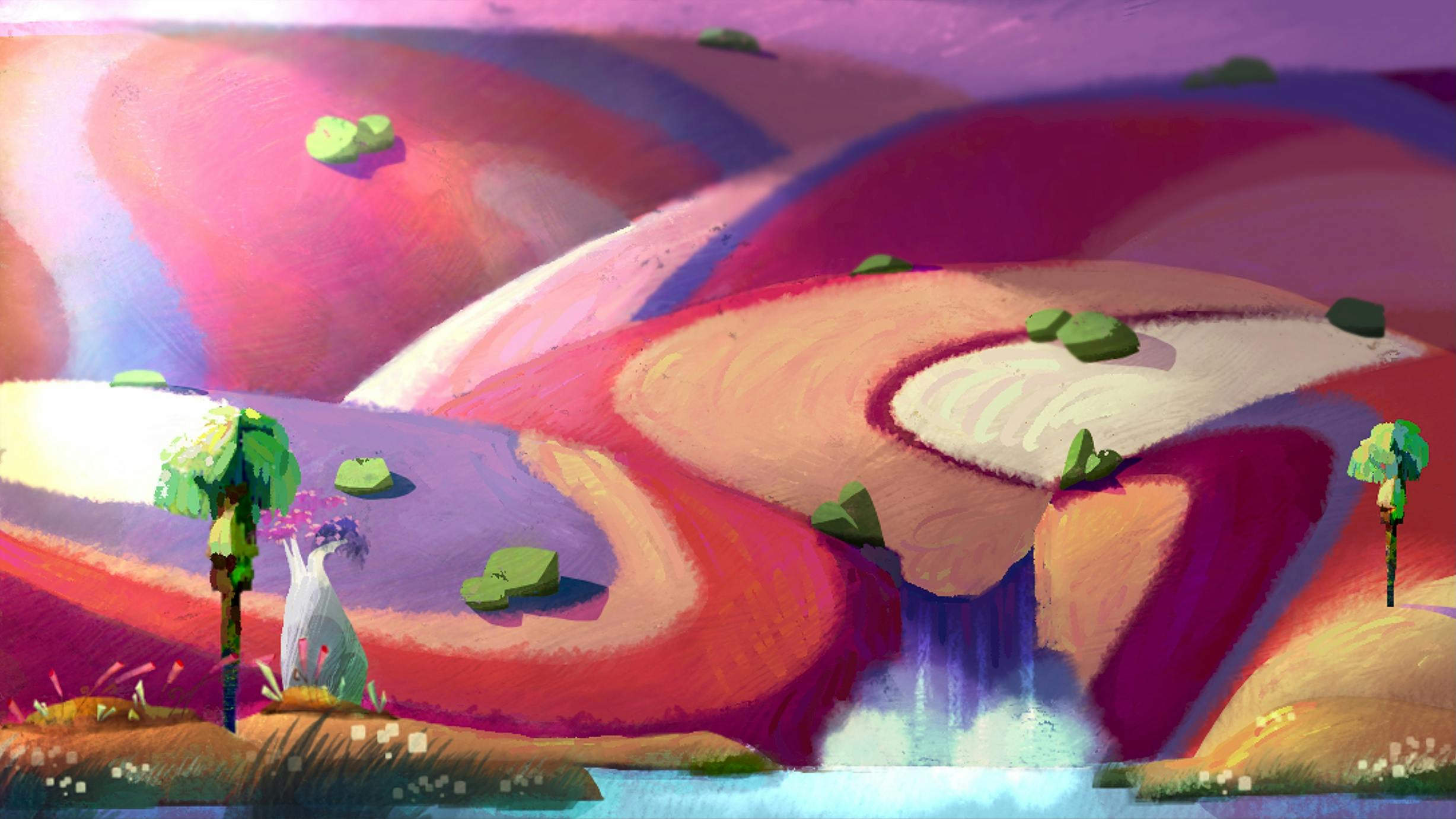JStew
Graphic Designer


Experiment to Eliminate Fear of Failure
Archer Dougherty: I know It may sounds cliché but I’ve drawn it ever since I can remember. I always gravitated toward art, so my career was simply a natural outgrowth of that relationship. I tried to pursue a formal art education but couldn’t afford to go to a proper brick-and-mortar art school and the internet wasn’t much of a thing in the late ’90s. So, I attended my local state university and studied sculpting and printmaking there but was discouraged from focusing on anything narrative.
After academia, the internet was gaining traction and the backlash in my mental space resulting from an education that didn’t ignite any real passion launched my true artistic training. Books, an infant YouTube, Facebook, and an even newer Instagram put me in touch with contemporary art which was being done in the ‘now’ and seemed important. I began my technical training through these channels and have been flying along this learning curve ever since.

Archer Dougherty: I don’t relate to the phrase “signature style.” I think it is used way too often to catalog for branding purposes, which has a use in the larger market, but it should not be a “goal” in itself for any artist in terms of the artistic process. When younger students are bombarded with art through social media, as they are now, and see profile after profile showcasing a very polished and specific personal visual language, they grow walls around their thinking, making them single-mindedly pursue the idea of a “signature style.”

It inhibits growth and takes up way too much mental space in anyone’s head, especially for those starting. I believe in pursuing ideas and experiments, technical and conceptual stepping stones and failures, and that your language will mature as you make mistakes and learn what appeals to you both spiritually and intellectually and what does not.
Simply copying or attempting to imitate a style to follow someone’s career arc will end up making you feel like you have to wear a suit that no longer fits, though it’s what everyone has come to expect. The way my art looks and feels has come through years of absolute and abysmal failures at every technique and visual language imaginable while also recognizing those small successes which add up to a rich and fulfilling personal output.
It is a massive additive compilation of preferences in art history, literature, movies, comics, and illustration. These preferences are arrived at simply by trying new things all the time. A lot of artists are afraid of failure but they don’t realize that failure isn’t even a thing until you try.
If you don’t constantly try, you won’t be a failure but neither a success. You won’t be anything at all.
Archer Dougherty: I sort of work with everything. My current technical preferences are oil on board, traditional, Procreate and the iPad digital. I prefer environment design and experimenting with color psychology on my iPad. When I paint in oils, I prefer symbolist portraiture.

Archer Dougherty: Communication and transparency. Understanding the other party’s priorities is essential so that both can understand each other’s point of view and reach a solid mid-point.

Archer Dougherty: I’ve put myself through a decade of learning to ingrain the fundamentals of things such as an approach to realism, value structure, anatomy, light, form, mass, composition, color, etc. I use those learnings to create from my mind when I want to. Actual symmetry is utilized in a lot of art, native art and, I suppose, one could say a great composition utilizes a form of visceral symmetry.
If you don’t constantly try, you won’t be a failure but neither a success. You won’t be anything at all.

Archer Dougherty: My projects vary greatly, depending on my mood. When I die, I will have so many unfinished works that my family won’t be able to sell any of them. In terms of future projects, I have many animated shorts and self-published printmaking collections mulling around in my head. Narrative painting projects and the like, too. Pinpointing one and beginning is ninety percent of the work.

Archer Dougherty: I have a singular notable work that no one has seen. In my opinion, it is the culmination of years of introspection, practicing self-awareness and reflection, learning largely academic techniques, and then learning to be alright with abandoning them when it suited the work. It is the result of self-discipline and self-abandonment and a study of the essence.
It is the one piece in which I can say I was fully immersed, mind and body, from beginning to end and it is mine in its entirety, called “Metempsychosis: The Transmigration of Souls”, an ink, oil, shellac, and wax medium on seven panels across seven feet. I’ll get it framed one of these days.

Archer Dougherty:

Archer Dougherty: Modern Eden Gallery in San Francisco remains one of my top favorites. They are generous, truly care about their artists’ well-being, and prioritize good relationships. They are good people. Dave and Brett from Laetro have quickly made the top of the list, as well, through their generosity, vision, intelligence, and communal priorities. I also loved working with Magnetic Dreams Animation Studio – the same adjectives tend to apply to the people who make my top clients list. I feel that communication, a mutually beneficial relationship, and empathy are important in any client relationship.


















